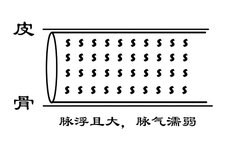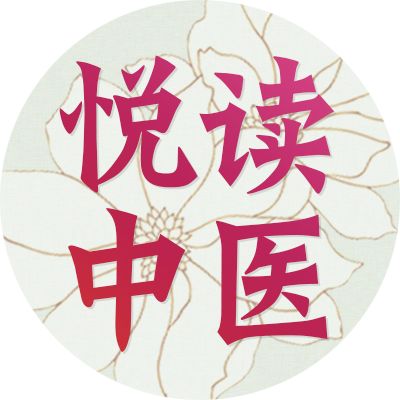 Daily TCM Insights at 11:30 AM
Daily TCM Insights at 11:30 AM
Authoritative and high-quality knowledge in Traditional Chinese Medicine
If you like it, please give me a star
Editor’s Introduction
Pulse diagnosis, as one of the main diagnostic methods in Traditional Chinese Medicine (TCM), plays a significant role in guiding diagnosis, pattern differentiation, and treatment. The ability to distinguish various pulse types from the fingertips and to perceive subtle differences between different patterns within a single pulse type directly affects the effectiveness of pulse diagnosis. Today, I will take you into the realm of “Xu Fu Mai” (Deficiency Pulse) with Teacher Dong Xuefeng and explore the types of Xu Fu Mai.
1. Pure Xu (Deficiency) SyndromeThis pulse is characterized by being floating and large, with a weak pulse quality, indicating a deficiency of the internal essence and qi, as shown in the image below.
 Pure Xu Syndrome Pulse
Pure Xu Syndrome Pulse
Source: “Illustrated Pulse Diagnosis: From Beginner to Expert in TCM Pulse Diagnosis”
This is a typical pulse manifestation of Xu syndrome. The pulse of pure Xu without other pathogenic factors is characterized by being floating and large. Zhang Zhongjing described the pulse of Xu syndrome clearly in “Jin Kui Yao Lue” (Essentials of the Golden Chamber), stating, “For a healthy man, a large pulse indicates labor; extreme deficiency also indicates labor.” “For men with a pale complexion, thirst and loss of blood, sudden palpitations, and a floating pulse indicate internal deficiency.” “The pulse of labor disease is floating and large, with restlessness in the hands and feet, severe in spring and summer, mild in autumn and winter, with yin cold essence leaking out, and weakness preventing movement.”
Due to internal deficiency, the qi mechanism is unable to control and consolidate, leading to a failure in both exterior and interior defenses, resulting in the leakage of essence and qi. The exterior deficiency leads to excessive sweating and aversion to wind; the internal deficiency leads to nocturnal emissions, diarrhea, and weakness in the lower back and legs. A floating pulse reflects the leakage of qi; a large pulse reflects the overall deficiency and inability to consolidate; a weak pulse reflects the essence of deficiency.
This pulse type is best treated with formulas like Gui Zhi Tang (Cinnamon Twig Decoction), such as Gui Zhi Tang, Gui Zhi Jia Long Gu Mu Li Tang (Cinnamon Twig Decoction with Dragon Bone and Oyster), Xiao Jian Zhong Tang (Minor Construct the Middle Decoction), and Huang Qi Jian Zhong Tang (Astragalus Construct the Middle Decoction). Bai Shao (White Peony) in Gui Zhi Tang has a sour and bitter taste, which has a consolidating effect, targeting the large and floating pulse; Gui Zhi (Cinnamon Twig) is warm and sweet, providing warming and tonifying effects, targeting the weak and powerless pulse. The combination of both is like a tightly clenched fist, effectively consolidating the essence and qi. Clinically, we can repeatedly verify that after using Gui Zhi Tang as the main formula, the floating and large pulse will quickly become smaller. This also indicates that any formula primarily based on Gui Zhi Tang should correspond to the characteristics of a floating and large or weak pulse.
Subtle Pulse Theory,how to achieve clarity in both the heart and the fingertips??

We have discussed the pure Xu syndrome without other pathogenic factors. This pure Xu syndrome usually presents with excessive sweating, fatigue, easy palpitations after exertion, and nocturnal emissions, while other aspects are normal, indicating a pure deficiency syndrome.
Clinically, common pure Xu syndromes can be categorized into persistent mild Xu syndrome and sudden overexertion leading to Xu syndrome. The latter is more common in adults, while the former is more common in children. Some may find it hard to believe that children can have Xu syndrome.In fact, mild persistent Xu syndrome is quite common in children.One reason is that children’s qi and blood are still weak; the second is that children often play until they are excessively fatigued without realizing it. Clinically, I often see children who primarily complain of excessive sweating, frequent colds, nocturnal enuresis, and constipation. This is mild persistent pediatric Xu syndrome.
Next, let’s illustrate with a case.
A 5-year-old child came for diagnosis due to “frequent nasal congestion and purulent nasal discharge.” The child usually sweats a lot and is prone to recurrent colds. The pulse diagnosis showed a significantly floating and large yet weak pulse at the right cun position, with a tight pulse at the right guan position and a thin pulse at the left position. The pulse is shown in the image below.
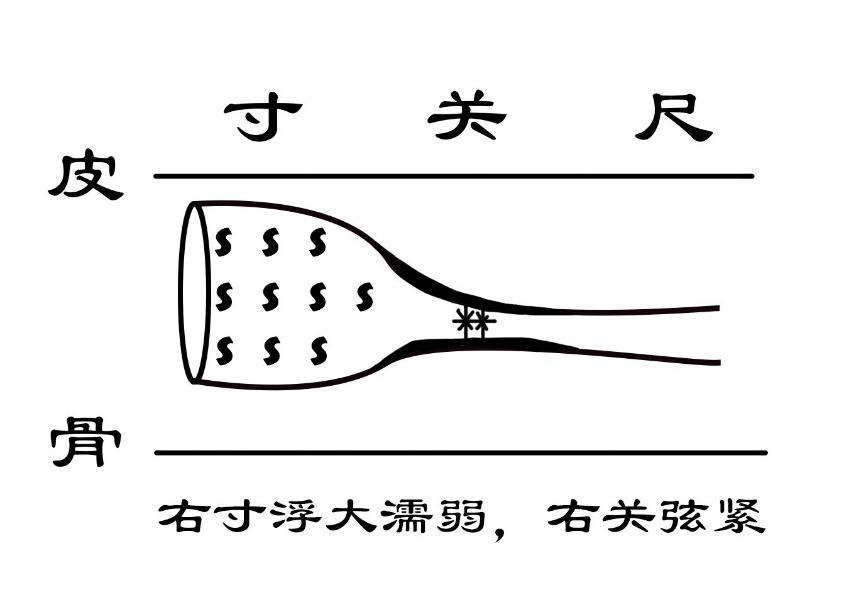
Source: “Illustrated Pulse Diagnosis: From Beginner to Expert in TCM Pulse Diagnosis”
This is Xu syndrome accompanied by Taiyin Cold Drink. Due to Xu syndrome, the child often sweats and catches colds; the external pathogenic factor triggers the Taiyin cold drink, leading to frequent nasal congestion and discharge. The treatment used Gui Zhi Jia Long Gu Mu Li Tang for Xu syndrome and Shen Zhuo Tang with Bai Dou Kou (White Cardamom) and Chen Pi (Tangerine Peel) for the Taiyin cold drink. The specific prescription is as follows:
Huang Qi (Astragalus) 20g, Tian Hua Fen (Trichosanthes Root) 15g, Bai Zhi (Angelica Dahurica) 10g, Gui Zhi (Cinnamon Twig) 12g, Bai Shao (White Peony) 15g, Da Zao (Jujube) 15g, Sheng Jiang (Fresh Ginger) 15g, Zhi Gan Cao (Honey-Fried Licorice) 8g, Long Gu (Dragon Bone) 15g, Mu Li (Oyster Shell) 15g, Bai Dou Kou (White Cardamom) 10g, Chen Pi (Tangerine Peel) 8g, Gan Jiang (Dried Ginger) 10g, Bai Zhu (White Atractylodes) 10g, Fu Ling (Poria) 10g, Tu Si Zi (Dodder Seed) 15g.
5 doses.
After taking 5 doses, the patient returned for a follow-up, showing a significant reduction in sweating, decreased phlegm and nasal discharge, and the right cun pulse had noticeably become smaller and tighter, no longer floating or large and weak. The treatment continued with Gui Zhi Long Gu Mu Li Tang as the main formula for consolidation.

2. Xu Syndrome with Exterior Pathogenic FactorsAs mentioned earlier, a pure Taiyang exterior syndrome pulse will be floating, and a pure Xu syndrome pulse will also be floating. So what happens if Xu syndrome is accompanied by a Taiyang exterior syndrome? How will the pulse change, and how should it be managed clinically?01Xu Syndrome with Taiyang Cold Damage
Patients with Xu syndrome who are affected by wind and cold cannot simply use Ma Huang Tang (Ephedra Decoction) because they have a Taiyang wind-cold syndrome. So how should we handle this?
Let’s refer to Zhang Zhongjing’s “Shang Han Lun” (Treatise on Cold Damage): “For Taiyang disease, with fever and aversion to cold, more heat than cold, and a weak pulse, this indicates no yang, and sweating is not appropriate. Gui Zhi Er Yue Bi Yi Tang (Cinnamon Twig Decoction with Two Parts of Yue Bi) is recommended.”
For exterior wind-cold, with closed exterior qi and internal stagnant heat, Da Qing Long Tang (Major Blue Dragon Decoction) would typically be used. However, this person has a Xu constitution, with a floating, large, and weak pulse, so direct use of Da Qing Long for sweating is not appropriate. What should we do? Zhang Zhongjing cleverly used Gui Zhi Er Yue Bi Yi Tang, applying two portions of Gui Zhi Tang to address the Xu syndrome with external pathogenic factors, and added one portion of Yue Bi Tang to address the stagnant heat.
If Xu syndrome is affected by wind and cold without transforming into heat,then Gui Zhi Er Ma Huang Yi Tang (Cinnamon Twig Decoction with Two Parts of Ephedra) should be used. Let’s look at a case.
A 7-year-old child came for diagnosis due to “cold with nasal discharge.” The pulse diagnosis showed a weak and floating pulse on the right hand, and a slightly tight pulse at the left cun position. From the weak pulse on the right hand, it can be inferred that the child has a constitution suitable for Gui Zhi Tang. The slightly tight pulse at the left cun indicates a mild cold and initial condensation of water qi. The treatment used Gui Zhi Er Ma Huang Yi Tang as the main formula. The prescription is as follows:
Ma Huang (Ephedra) 5g, Xing Ren (Apricot Kernel) 12g, Gui Zhi (Cinnamon Twig) 12g, Da Zao (Jujube) 10g, Sheng Jiang (Fresh Ginger) 10g, Zhi Gan Cao (Honey-Fried Licorice) 6g, Huang Qi (Astragalus) 15g, Hua Fen (Pollen) 12g, Chen Pi (Tangerine Peel) 10g, Fang Feng (Siler) 10g, Ge Gen (Kudzu Root) 10g, Bai Shao (White Peony) 12g.
3 doses.
After taking the medicine, the parents reported that the child felt significantly better after just one dose.
This is a relatively mild wind-cold syndrome. If it were a more severe wind-cold with fluid retention, the qi mechanism would be more pronounced, and the internal qi would be severely deficient, leading to a significantly different pulse and treatment approach.
Simple and Easy to Learn,Clear at a Glance——

02Xu Syndrome with Severe Wind-Cold
“Pulse Theory” describes the floating pulse as: “Floating pulse is felt lightly with the hand, floating on top, like wood floating on water.” This “like wood floating on water” vividly expresses the position and shape of the floating pulse. However, the author did not further clarify that this is just a special case of the floating pulse, not its norm.
This state of “like wood floating on water” indicates that the qi mechanism is attempting to escape externally, and at this time, consolidation is insufficient, so sweating should not be rashly applied.
So how should we handle this?
Let’s refer to similar passages in “Shang Han Lun”: “If the pulse is floating and rapid, it should be treated with sweating to recover. If purging is applied, and the body feels heavy with palpitations, sweating should not be applied; the patient should sweat naturally to recover. The reason is that the pulse at the chi position is weak, indicating internal deficiency; both exterior and interior must be solid, and the fluids must harmonize for natural sweating to occur.” (49) “If the pulse is floating and tight, it should be treated with sweating for body pain. If the pulse at the chi position is slow, sweating should not be applied. How do we know this? Due to insufficient nourishment of qi and blood.” (50)
Passage 49 refers to sudden overexertion (equivalent to inappropriate purging) leading to severe wind-cold external pathogenic factors in Xu syndrome. In this case, Zhang Zhongjing believes that sweating should not be applied; the patient should rest, and the yang qi may recover naturally. Passage 50 refers to a severe wind-cold external pathogenic factor in a person with a pre-existing Xu syndrome. At this time, even with rest, the yang qi cannot recover quickly. In this case, Zhang Zhongjing warns against sweating but does not specify how to manage it. However, analyzing these two passages,the treatment should focus on warming the yang, tonifying deficiency, and consolidating the escape; only after the righteous qi has recovered can we consider whether sweating is needed to expel wind-cold.
“Like wood floating on water” pulse is shown in the image below.
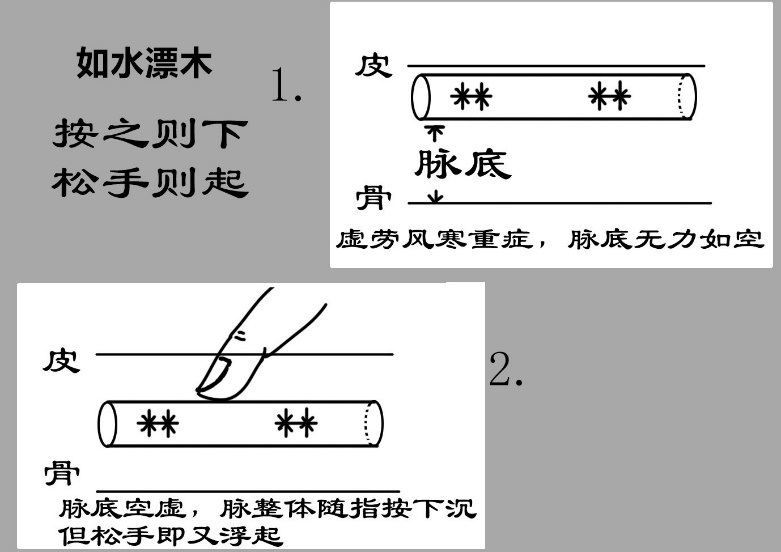 “Like wood floating on water” pulse
“Like wood floating on water” pulse
Source: “Illustrated Pulse Diagnosis: From Beginner to Expert in TCM Pulse Diagnosis”
This “like wood floating on water” pulse can occasionally be encountered clinically. I once treated a similar case of a patient with gout, experiencing swollen and painful ankles. The patient’s pulse was floating and tight; when pressed, it would sink, and upon release, it would rise, especially the right chi pulse was prominent. I treated it with a strategy of releasing the exterior and transforming dampness while warming the yang. The patient reported no significant relief from pain after taking the medicine, but felt unusually fatigued. In retrospect, perhaps I should have first used Gui Zhi Jia Long Gu Mu Li Tang.
Important Clinical New Book
In addition to Xu syndrome with Taiyang cold damage and severe wind-cold, the pulse manifestation of Xu syndrome also includesaccompanied by Taiyang Wind Stroke, Taiyin Wind Stroke, Blood Heat, Blood Dryness, and Wind-Cold Damp Bi and other conditions, all of which Teacher Dong Xuefeng has analyzed and provided treatment guidance for in detail in the book.
In this book, “Illustrated Pulse Diagnosis,” Teacher Dong Xuefeng uses illustrations to explain pulse manifestations, from the basic techniques of pulse diagnosis to the clinical combination of pulse and formulas, leading readers step by step to learn pulse diagnosis. Whether you are a beginner in TCM or a professional with some practical experience, you will gain valuable insights from this book.

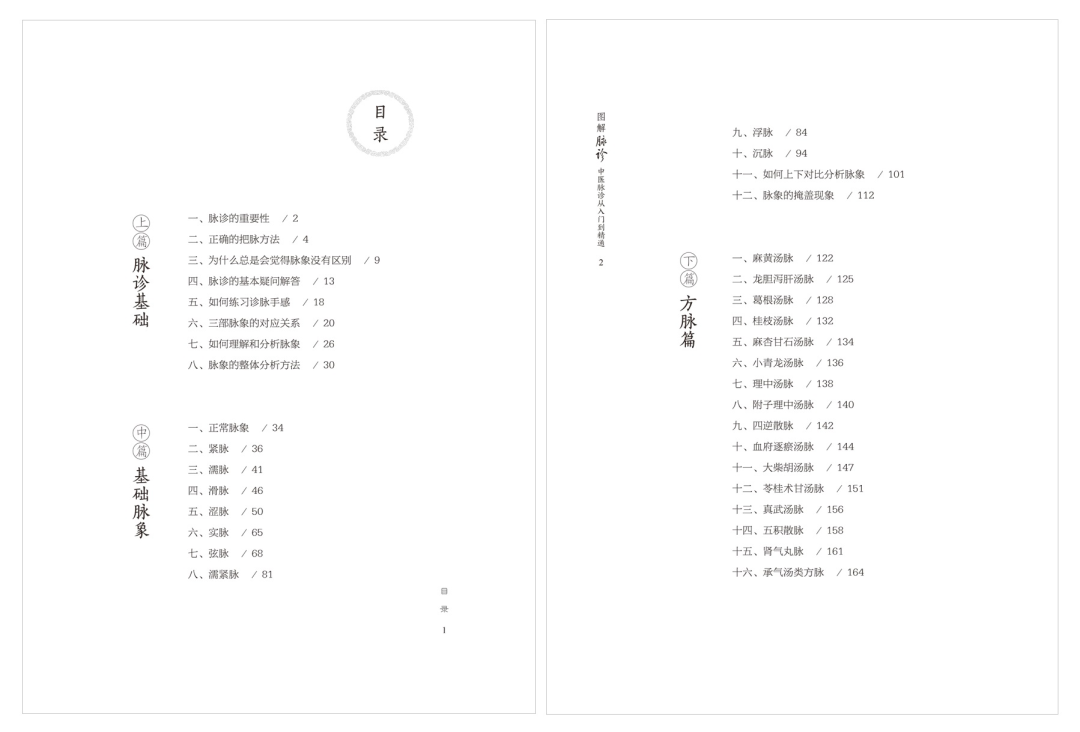
“Illustrated Pulse Diagnosis: From Beginner to Expert in TCM Pulse Diagnosis“
Click on the cover to enter the Yuyijia TCM Academy to purchase this book
Scan to read for free
This book uses a large number of intuitive illustrations to help readers quickly learn and master pulse diagnosis. The book is divided into three parts: the first and second parts explain the basic knowledge of pulse diagnosis, discussing common pulse manifestations in a graphic format. The third part relies on clinical cases and the formulas from “Shang Han Lun” to further analyze the pulse manifestations of various clinical cases, presenting those stable pulse manifestations that have been repeatedly verified in clinical practice in a visual manner. This book is both an illustrated guide to pulse diagnosis and can also be understood as a pulse解伤寒方, providing a new perspective for the study of classical formulas.


Previous Exciting Recommendations
Using Blood Activating and Stasis Resolving Methods to Treat Various Diseases
Important: The 7th National TCM Reading Activity has been launched!
Are you suffering from dampness? Sitting on it every day can “force out” 20 years of damp toxins! Say goodbye to dysmenorrhea and obesity!
 Copyright Statement
Copyright Statement
Some content of this article is excerpted from “Illustrated Pulse Diagnosis: From Beginner to Expert in TCM Pulse Diagnosis” (published by China Traditional Chinese Medicine Press, authored by Dong Xuefeng), recommended and published by Yue Du Zhong Yi (WeChat ID: ydzhongyi), with cover images and illustrations sourced from Shetu Network, copyright belongs to the original author. If there is any misuse, please contact for removal. Unauthorized reproduction is prohibited!


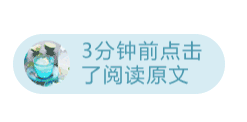 Click“Read the Original”to purchase the recommended bookGood articles must be “looked at”
Click“Read the Original”to purchase the recommended bookGood articles must be “looked at”

